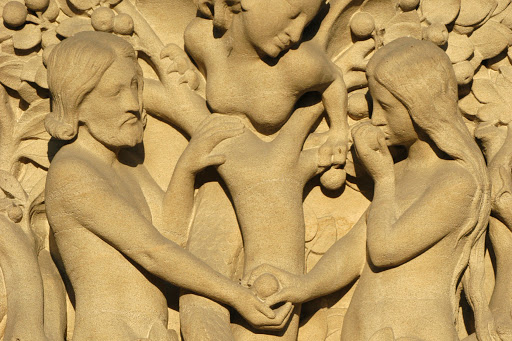Most (if not all) human cultures revere, or have revered, ancient trees.
Seen as bridges connecting the divine and the human (for good or for ill), they have been considered sources of knowledge, life, fertility, longevity. Abusing, disrespecting, or misusing one of these trees can unleash disaster and, eventually, bring death — as in the biblical tale of the Garden of Eden, with its trees of life and of knowledge of good and evil (Cf. Gn. 2, 9).
The trees in these stories are always ostensibly different from any other tree in the forest (or the Garden), and thus seen as belonging to a separate, special, transcendent class of beings.A recently published study, co-authored by three scholars specializing in biological and environmental sciences and evolutionary biology, takes a deep look at the role this kind of old, legendary trees play in ecosystems.
The study, published in late January in Nature, explains how these ancient trees play a key role in the development and maintenance of forests all over the world. The three researchers (Charles H. Cannon, from the Morton Arboretum; Gianluca Piovesan, from the Università Tuscia; and Sergi Munné-Bosch, from the University of Barcelona) explain how a small number of trees provide genetic and evolutionary benefits to the rest of the forest. Referred to as “trees of life” in the study, these exceptional trees are usually 10 to 20 times older than the average plant species in their ecosystems.
The image of the “Tree of Life” plays a big symbolic role in most religions and mythologies, from the Nordic Yggdrasil described in the Icelandic Sagas toSt. Augustine’s reading of the Cross of Christ as being the true Lignum Vitae, the definitive Tree of Life that was prefigured in that of Genesis 2:9. In fact, this very same tree reappears in the Book of Revelation as a part of the new garden of Paradise — the last book of the Christian Bible thus echoing and fulfilling the first one. In Revelation, the tree is no longer forbidden, as it is related to the revelation of God in Christ: St. Bonaventure famously wrote (in his Lignum Vitae, precisely) that the medicinal fruit of the tree of life is Christ himself. In a like manner, in his commentary on the Gospel of Luke, St. Albert the Great taught that the Eucharist is the Fruit of the Tree of Life. Now, Augustine of Hippo (who preceded them both) thoroughly identified the tree of life with Christ himself. In his famous commentary On The Literal Meaning of Genesis, Augustine wrote:
All these things [the images and characters of the book of Genesis, that is] stood for something other than what they were, but all the same they were themselves bodily realities. And when the narrator mentioned them he was not employing figurative language, but giving an explicit account of things which had a forward reference that was figurative. So then the tree of life also was Christ […] and indeed God did not wish the man to live in Paradise without the mysteries of spiritual things being presented to him in bodily form. So then in the other trees he was provided with nourishment, in this one with a sacrament […] He is rightly called whatever came before him in order to signify him.
Just as these saints understood the Tree of Life to literally nourish the believers, these environmental scientists discovered ancient trees sustain the health of the surrounding trees. These trees keep forests from dying out, and keep them thriving for millennia. By examining the demographic patterns of ancient forests, they discovered a very small proportion of trees (fewer than 1% of the trees in the environment) “emerge as life-history ‘lottery winners’ that reach far higher ages that bridge environmental cycles that span centuries,” as explained by Dr. Chuck Cannon in a media release from the Morton Arboretum: “In our models,” Cannon explains, these rare, ancient trees prove to be vital to a forest’s long-term adaptive capacity, substantially broadening the temporal span of the population’s overall genetic diversity.”
Despite their extreme age, the study finds these “Trees of Life” have survived countless environmental changes. This resilience (which does not mean they are immune to deforestation or other threats) has allowed them to pass on their genetic material to the rest of the organisms sprouting around them, while cutting off a large amount of carbon, in comparison to the typical old tree in the woods.

